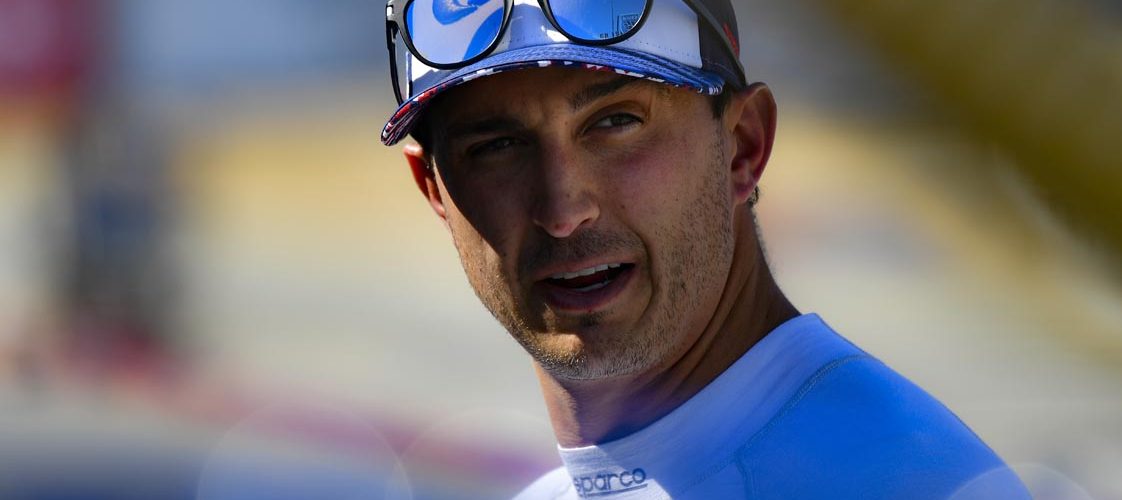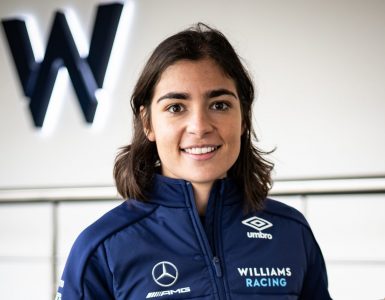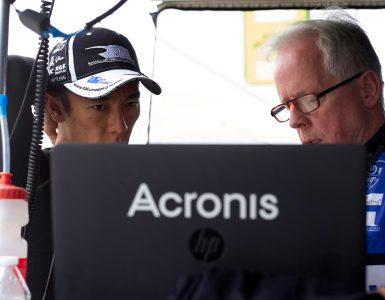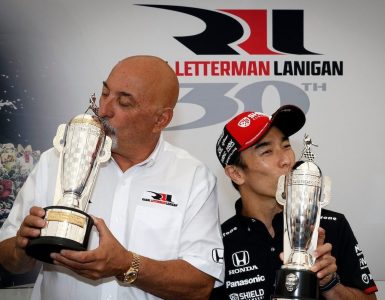Any IndyCar race at the fearsome 1.5-mile Texas Motor Speedway is a date for your diary. On Saturday June 6, there are loads of new variables being thrown into the mix to add even more spice.
The Genesys 300 will be the first round of the 2020 NTT IndyCar Series, which in a normal world would have started on March 15 on the streets of St Petersburg, Florida, before the Covid-19 Pandemic struck and the lockdown began.
This Saturday, behind closed doors, the engines will finally be re-fired for practice, qualifying and race – all in that one day. That in itself is a challenge, throw in that the race starts before sunset and runs into and beyond dusk, conditions that they will not have run in before. If that isn’t enough racing into the unknown, it will also be the first race with IndyCar’s new safety aeroscreen – and many drivers have not tested with the screen on an oval. That includes Rahal Letterman Lanigan Racing’s Graham Rahal and Takuma Sato.
“@TXMotorSpeedway is always challenging. With a new tire specification, the Aeroscreen’s first race, 35-lap maximum stints, and the 2-1/2 month break, we expect an exciting race." — RLL @IndyCar Technical Director, Tom German
More: https://t.co/UFlvBvs4ws
— Rahal Letterman Lanigan Racing (@RLLracing) June 1, 2020
Sato, the 2017 Indianapolis 500 winner, is fully aware of the challenges. “Usually, at oval events we have two days,” he told Motorsport Technology. “We have daytime practice, qualifying in the evening and then we go to a night session for more practice where we can duplicate the conditions that we will have the next day for the race. Daytime and night evening running needs very different handling, and a very different set-up.”
Through the lockdown both Sato and RLL team-mate Rahal have been on almost daily conference calls and researching data collected by team partner Acronis to try to arrive in Texas as ready for action as possible, but this race throws up circumstances that neither have been able to prepare for on what is already a challenging track.
Rahal, already a winner there after a thrilling final 10 laps run side-by-side in 2016, is eager to get racing again despite the unknowns. “I’m fine with it,” says Rahal. “The biggest challenge we are going to face is the aeroscreen, and what will that do? How does it perform on an oval? How will it perform with the glare in your eyes?”
It’s finally race week 🙌🏼😷 pic.twitter.com/iw523Wiz7T
— Graham Rahal (@GrahamRahal) June 1, 2020
Sato is in full support of the aeroscreen, and like his team-mate is eager to get back racing, but also aware that they have a lot to learn in not much time. He has run with it at the COTA road course with the screen, so at least has had a taste.
“We don’t know how it works with the new higher centre of gravity on the oval because of the aeroscreen, or the effects during a stint at night.
“We talk about safety, and I really appreciate it and what IndyCar has done,” Sato adds. “The aeroscreen is really cool-looking and I feel like a jet fighter pilot now! You feel really protected. Technically there are a lot of aspects that we do not know, which will definitely make the race very interesting! There are a lot of factors unknown, and yes, very challenging. I’m sure the Rahal engineers will figure it out and we will have a competitive race.”
The daunting 1.5-mile Texas Motor Speedway, with its steep 24-degree banked turns is a track Rahal enjoys. “It is one of my favourites, yes, although from 2016 the track is very different. In 2016 it was the type of circuit that you could run two wide, three wide – sometimes four – at Turn One in particular. But the way that the track is today with the repave, that’s not really possible anymore. It has changed… In some ways for the better, and in other ways, not. I wish that we were still able to race the variety of lines that we used to, particularly for the fans, and their enjoyment, but we see that with all race tracks. When they are fresh, they’ve got a lot of grip. The aggregate, the pavement, is extremely grippy, then as the tracks age that kind of goes away. It is certainly it’s a little bit of a different challenge.”
Then there is the aspect of racing ‘behind closed doors’, and no fans in the stands. Will that make a difference? There will not be autograph sessions or sponsor presentations, just pure driving and focus on the race in hand.
“We all have the same circumstance with the virus around the world,” says Sato. “We have to protect the people, and therefore no spectators. I hope a lot will watch on the tv, and I think the ratings are going to be a lot higher. We will race for them.
“But It’s not the first time we do something without spectators. Think of Indianapolis Motor Speedway. On race day we have 300,000 plus people at the track. For practice we have virtually zero. These are difficult times, and hopefully this weekend will succeed, and we can race for the rest of the season.”
It has been a tough couple of months for everyone, but all at RLL have devoted their time to preparing for the racing to start, analysing data, talking and trying to second guess the new challenges that the Texas race is going to throw at all teams. Saturday night’s race will be one not to miss.
Rahal sums up his thoughts on the weekend ahead. “I’m excited to go back, I’m excited to get things kicked off. We had a good start there last year, so I feel positive about our chances. We have done our homework, and I’m really glad that we are going back racing.”
It all starts under the lights of @TXMotorSpeedway. Tune in to NBC this Saturday, June 6 at 8 p.m. EST.
Read More: https://t.co/H0oOofmdhG#PoweredByHonda // #INDYCAR // #Genesys300
— Honda Racing / HPD (@HondaRacing_HPD) June 1, 2020




